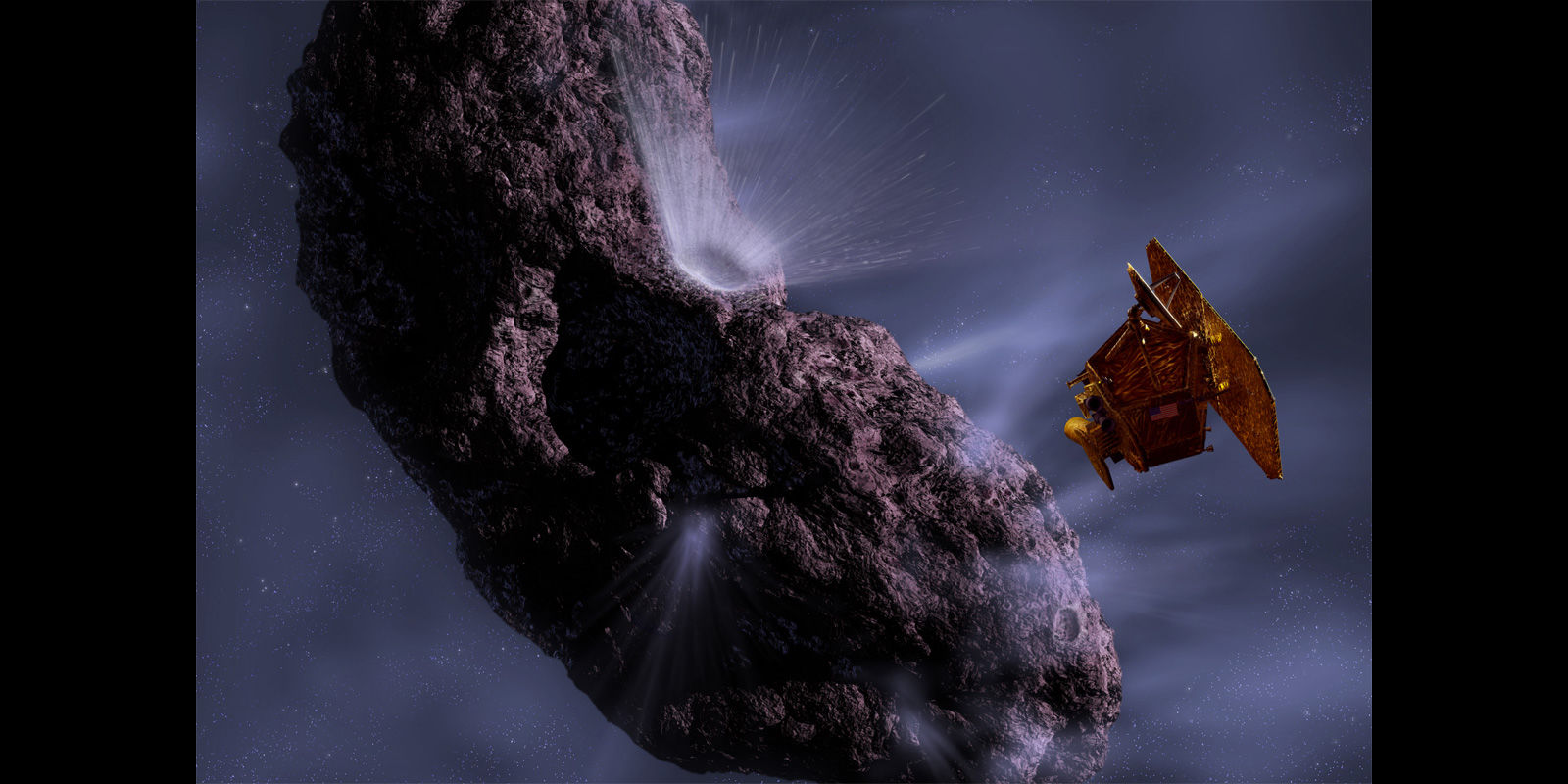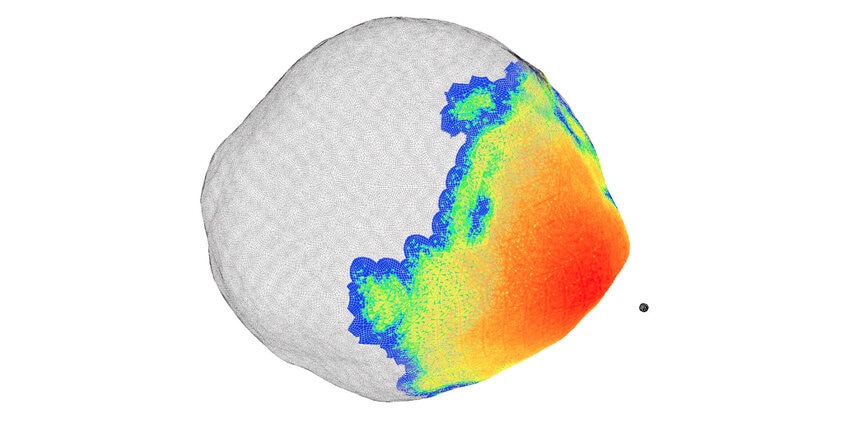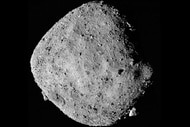Create a free profile to get unlimited access to exclusive videos, sweepstakes, and more!
Whack 'em or nuke 'em: How to deflect a killer asteroid

A new paper just published by scientists from various NASA and the National Nuclear Security Administration labs looks at the best way to prevent an impact from an asteroid headed toward Earth.
Their conclusion: Above a certain size, roughly 300 meters across or so, the best thing to do is nuke it. Seriously! But not for the reason you think.
In (really terrible) movies and such, a nuclear weapon is planted onto an incoming asteroid, and the rock is blown to smithereens. But this won't work! For one thing, you can't be sure what will happen with the pieces. Instead of one big asteroid headed toward you, now you might have hundreds of slightly smaller ones. Radioactive ones.
What you really want to do is have what's called a standoff detonation. You blow up the bomb at some distance from the asteroid (generally 50–1,000 meters away from the surface). The goal isn't to shatter it, but to heat it. A lot.
Even then, this isn't what you think! There's a thermal pulse from the bomb, a flash of heat, but that's not the main way this works. Instead, the bomb generates a huge pulse of high-energy X-rays. These penetrate the surface and are absorbed by the material there.
The pulse is so big that a lot of energy is deposited into the asteroid — like, a lot a lot — which vaporizes the material. This happens so quickly (a fraction of a millisecond!) that the material expands violently. You get a very large amount of gas expanding extremely rapidly… which is pretty much the description of how a rocket works. This expanding gas pushes on the asteroid, creating a force that changes its velocity a little bit. And by that I mean the scientific definition of velocity: Not just the speed but the direction, too.
That's exactly what you want! Over time, even a small change in speed can cause the asteroid to miss Earth. The amount of deflection depends on a lot of factors: The mass of the asteroid, its shape and size, the material on the surface, the porosity of that material, its structural strength, the type of bomb, the explosive yield of the bomb, and the standoff distance of the explosion. In fact that's what this research was trying to figure out, how all those factors play into the amount of deflection.
They used extremely sophisticated computer models that take into account all these physical factors to see how efficient the explosive mechanism is in moving a threatening asteroid. As a test subject they chose Bennu, a 500-meter wide rocky rubble pile that is currently being scrutinized by NASA's OSIRIS-REx mission. The reason for this is that we have a lot of good numbers for it, including its shape, density, and so on, but also because as the mission goes on we'll get even better numbers for it. It's a sample-return mission, too, so scientists will be able to find the exact composition of the surface material, aiding further models.
What they found is that surface vaporization via nuke works pretty well for an asteroid like Bennu, giving a deflection of about 6 centimeters per second. That's not much — a housefly can outpace that — but with a lead time of 13 years that'll do. In other words, if we have at least that long before impact, a standoff nuclear detonation is sufficient to deflect it.
It gets better. Although they couldn't model this in detail, they note that the rapidly expanding vaporized material will create a pretty big pressure wave, compressing the solid material below it. This is similar to what happens, ironically, in an asteroid impact! This compression carves a crater into the asteroid surface, and that material gets ejected too. This adds an extra kick, deflecting the asteroid even more. They estimate that for asteroids like Bennu this can reduce the needed lead time to only 3 – 4 years. That's pretty good news.
They compare this to a kinetic impactor, literally slamming the asteroid as hard as you can with a rocket. This will also change the speed and direction, like someone on the defensive team in American football hitting the quarterback. They find that this works well up to an asteroid size of 300 meters, but bigger than that and a nuke is more efficient.
There's still a lot of modeling to be done — while they ran through several physical parameters, there's still a lot we don't know about asteroids. And there are issues with this method, including the Outer Space Treaty, which specifically forbids detonating nuclear weapons in space. Now, if a 500-meter wide asteroid has Earth in its crosshairs, I suspect the UN might be amenable to loosening that part of the treaty for that specific case! But the politics of all this isn't something we can ignore, either. I wonder how the public would react to this?
And it's more complicated than that. What if there's, say, a 20% chance it'll hit in 10 years? Those aren't convincingly high odds, but are they high enough to risk launching a megaton-class nuclear weapon into space? What if the detonation works, but instead of missing the Earth it just moves the impact site to a different country? These are just examples, but I can easily imagine the actual situation being a lot murkier than in the movies.
Maybe by the time we see a big enough asteroid to be threat heading our way, we'll have a bigger presence in space, and there will be other opportunities to push it away. But for now that's not the case, and love 'em or loathe 'em, the least we can do is investigate the possibility of different methods, including using nuclear weapons. I hope it won't come to that, but if it does, we may all be glad for research like this.














